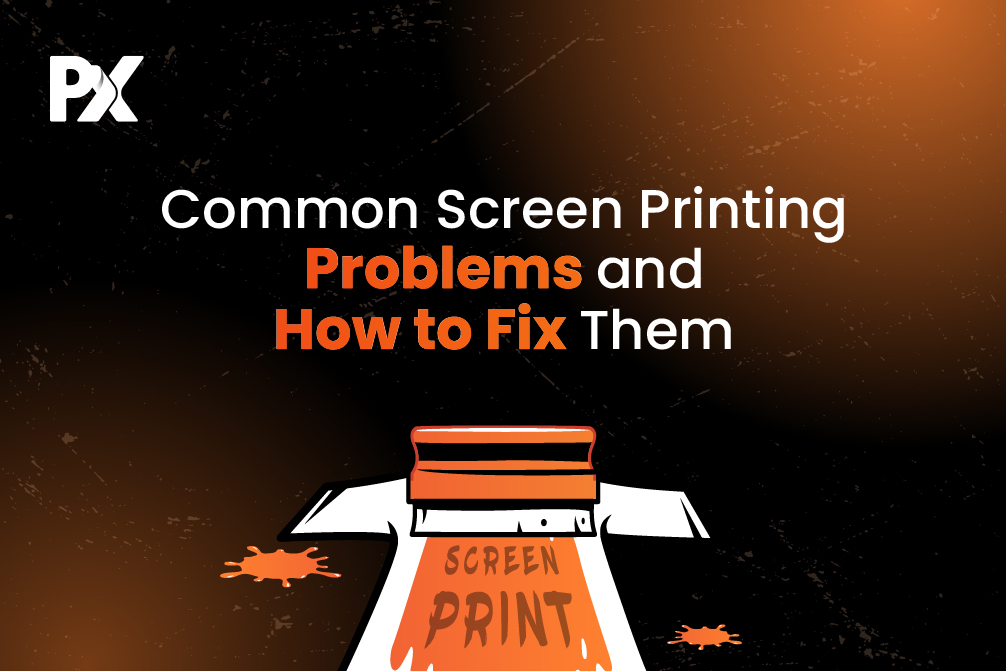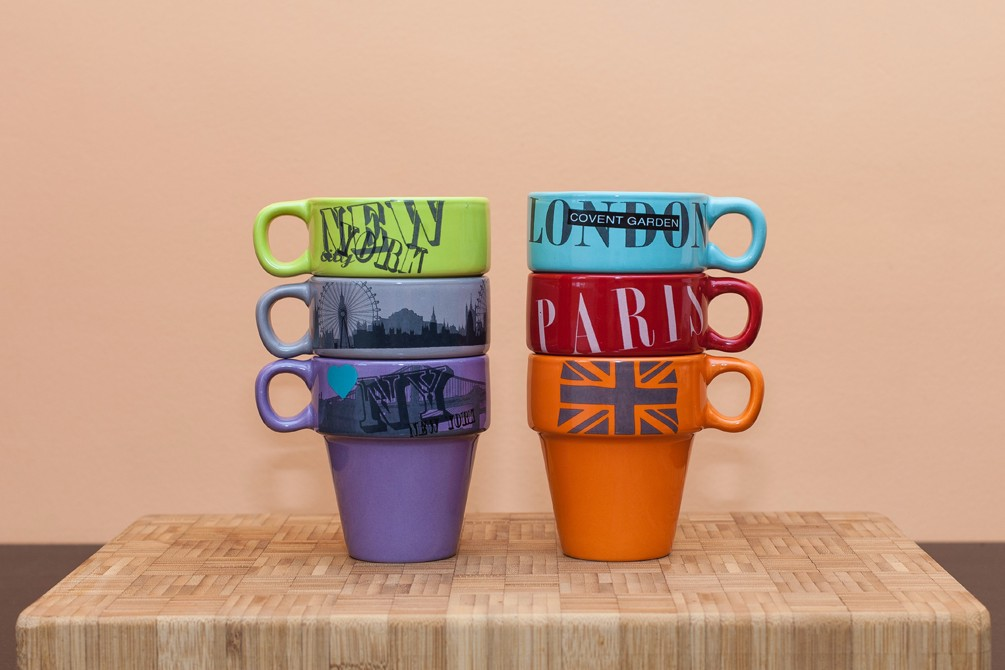Summary
Screen Printing has been a popular printing method as it is cost-effective, versatile, and provides long-lasting and high-quality outputs.
However, as a screen printer, you may have to face some common screen printing issues. If so, ensure that you handle those issues so that they don’t affect your productivity and business.
So, let’s understand in detail those common problems and how you can resolve them.
7 Common Screen Printing Problems and How You Can Fix Them
1. Ink Bleeding
There is the issue of ink bleeding, where the ink spreads more than required and becomes blurry and messy on the surface. This is mostly due to overusing ink or applying too much pressure during the printing process.
How to fix it?
Make sure that the screen is under a good amount of tension so that the ink will not soak through it incorrectly.
After that, replace the squeegee head with a harder one, which will better manage the ink. You also have to make sure that you are not filling the screen with ink; the ideal is to have a thin and even layer.
Modifying the method of printing to use less forceful pressure. Finally, use high-quality properly cured ink to avoid the stretching effect which can be detrimental to the sharpness of the design.
2. Blurry Prints
Blurry prints, especially blunt prints, are a common problem in screen printing due to poor registration or improper tension. When a print is not properly held in place, it shifts slightly within the printer, and the image becomes blurred.
How to fix it?
Ensure that the screen tension is optimal by checking if it is stretched well. Further, ensure that the screen and the printing surface are well anchored so that they don’t shift during silk screening.
It is also not bad to ensure that the design is well-positioned on the screen before beginning the print. Another cause of blurry prints is not regularly maintaining the screen and the printing equipment.
By addressing these issues, you will be able to get high quality, clear images on your screen printing jobs.
Keep your screen prints vibrant and intact with the right curing process.
Our detailed guide provides essential tips for preserving the brilliance and longevity of your designs.
3. Ink Not Passing Through the Screen
Another common screen printing problem is when the ink does not pass through the screen. This can happen if the screen is full of dried ink or dust.
How to fix it?
Clean the screen properly using a screen cleaner or soap and water. To avoid damaging the mesh, clean it with a hard brush very softly.
But if the ink does not flow through it, there is need to ensure that either the mesh is too tight or it is too loose and correct it.
Sometimes, the ink may be incompatible with the mesh used, which leads to problems. Check that you are using the right ink on your screen.
This issue should not occur in the future if screens are properly used and stored and regularly cleaned and maintained.
Interested in learning more about screen printing? Explore the different types of screen printing methods and learn the best technique for your creative needs.
4. Pinholes in the Print
Pinholes in the print are a typical case of a screen printing issue, where little holes occur in the printed work. These holes are common when dust, dirt, or dried ink gets between the printer’s screen.
How to fix it?
The first thing that you should do is clean your screen well before you start each print. After washing, it is advisable to use a degreaser to ensure that the oily particles are eliminated before using the screen.
Also, inspect the emulsion for any defects and invariably for another layer if necessary. During printing ensure that your work space is clean and dust particles are avoided.
Regularly inspect your prints and screens to catch any pinholes early and address them promptly.
Need help with t-shirt printing? Check our t-shirt design tool to enable customization in your store!
5. Ghosting
Ghosting in screen printing is a shade effect where an image or pattern is printed invisible but can be seen in the printed material after the printing process is complete. This often results due to some residue left on the screen or cleaning it in a wrong way.
How to fix it?
Always clean the screen with the right screen cleaning solution and make sure the screen is clean at all times. Occasionally, it may be possible to wash the material with a degreaser to clean it from the remaining traces of the ink or emulsion.
Moreover, it is important that the screen be dried before it is used again if it has been washed. If ghosting continues, try using new screens every time you print the shirt’s design.
6. Uneven Prints
Uneven prints refer to the situation in most screen printing processes where some parts of the fabric receive less or more ink than others. This issue is usually caused by turn or pressure variations in the print or an unequal screen title.
How to fix it?
First, pull the screen tight and spread the emulsion uniformly to mitigate issues of uniform prints. Subsequently, perform a visual inspection of the squeegee to determine whether the edge is straight and applies pressure on the screen uniformly.
Adjust the pressure you use when pulling the squeegee to be sure you do not over-exert force on any one side. Additionally, check that the printing surface is stable and no movement occurs while the prints are being created.
Last but not least, always clean your screens and screen printing equipment, especially if they have been contaminated with a lot of ink, which could hinder the printing process.
7. Bubbling
Bubbling in screen printing occurs when small air pockets form under the printed layer, producing small bubbles on the surface. This problem is usually observed when the screen is poorly prepared, or the used ink is too viscose.
How to fix it?
You can start by covering all the important information in the report with the projector screen. First, verify that no stains or residues remain on the surface of the screen. However, diluting the ink slightly may also be possible if it has become too thick and needs to be thinned.
Also, be sure to check that the pressure while printing remains even in order not to trap air. Another option is to inspect the tension of the screen mesh, as such a mistake can lead to bubbling.
In a Nutshell
Now that you have understood how some common screen printing issues can impact your screen printing output quality, it is important for you to not let them creep in. By following the above-discussed solutions to issues, you can keep them at bay and produce the best results.
Are you a first-timer and want to launch your own online print store with a minimum budget? Our Web-to-Print solutions can help you out.
All product and company names are trademarks™, registered® or copyright© trademarks of their respective holders. Use of them does not imply any affiliation with or endorsement by them.




